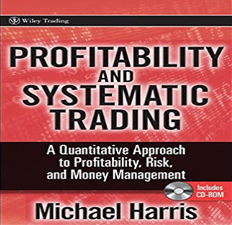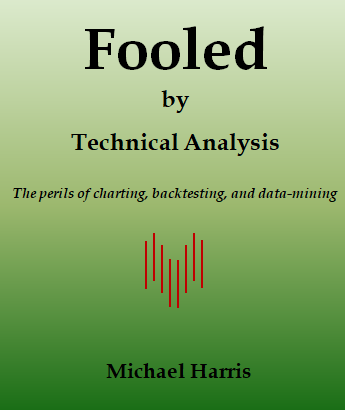Predictions of when the next bear market will arrive are futile exercises and they focus on the wrong problem. A better problem to focus on is how to minimize the inevitable losses.
When it comes to forecasting bear markets and large corrections, overconfidence in fundamentals and technicals will likely impact performance and cause many false signals and here is basically why:
- Fundamentals suffer from lags.
- Technicals suffer from small samples.
Most, if not all, famous fundamental and technical analysts who allegedly forecasted a bear market or significant correction in the past have failed with subsequent forecasts. This possibly proves that their temporal success was due to selection and survivorship bias. Bear markets and large corrections are unpredictable.
Focusing on forecasting or predicting bear markets and large corrections is the wrong problem to solve. A better problem to solve is how to minimize losses if such adverse conditions emerge or even make some profits. The former may be possible with simple indicators, but the latter requires some sophistication that is beyond the capabilities of the average investor or trader.
Trying to understand the macroeconomic conditions and their impact on markets offers a sense of intellectual superiority, but it may lead to the wrong path. It is only natural that people want to understand what is happening, the drivers, and the causalities, but the complexity of those is both high and dynamic. Looking at a few variables, such as the GDP, the CPI, and the interest rate level, and trying to forecast how a complex non-linear system will respond, besides being a futile exercise, also exhibits a naive first-order approach.
A simple strategy
The consistency of an approach that limits losses in the markets is possibly more important than its sophistication. Academics and many practitioners have favored the simple 12-month moving average. Buying when the price is above the 12-month moving average, with a monthly frequency, and selling when the price falls below the average has reduced the maximum drawdown by more than a factor of 2. However, as shown below, protecting an investment in the S&P 500 index total return (SPY) has adversely affected the total return, as expected by virtue of the risk-reward relationship:
The total return of the SPY ETF since inception has been 2,246% versus 1,690% for the moving average strategy that limits losses due to drawdowns. Some conservative investors may find this performance perfectly acceptable, while others may declare it a highly undesirable tradeoff. However, there is no free lunch, and trying to guess the next GDP or CPI number release will definitely not offer a way out but possibly more pain and losses.
A way to improve the returns is by leveraging the moving average strategy up to the volatility of the SPY ETF. This results in a leverage of about 1.5.
This is a significant improvement over the original strategy, with a 4,744% total return, or more than double the buy-and-hold total return but at a lower drawdown. Specifically, buy and hold has offered a 10.3% annualized return at 55.2% maximum drawdown, while the leveraged strategy has a 12.8% annualized return at 31.4% maximum drawdown.
How many hedge funds, macro or quantitative, have beaten this simple strategy so far? It’s likely that only a handful, out of thousands, have achieved such success.
Caveat Emptor
Trend-following has many advantages but also disadvantages. A major disadvantage is the high demand for discipline; despite its simplicity, a simple moving average strategy is difficult to adhere to, especially when there is a high level of noise from mainstream financial media and market experts.
From the technical side, it is necessary to explain that this simple strategy has not faced extreme adverse conditions so far in the US stock market. Specifically, the US stock market has not faced a long sideways chop, but recoveries from bear markets and corrections have taken the shape of V-bottoms. Trend-following strategies may generate significant losses during sideways markets, depending on volatility and duration. For example, during the long sideways consolidation in emerging markets from 2010 to 2015, the leveraged strategy losses amounted to about 38%.
Although trend-following is a simple and dynamic strategy, it faces severe constraints depending on market conditions.
Conclusion
Knowing what doesn’t work, the problem to solve, and the conditions under which the solution will fail is crucial. Higher sophistication does not necessarily lead to better performance. There is no free lunch.
Subscribe below for notifications of new posts and updates from the Price Action Lab Blog and get the free PDF book “Profitability and Systematic Trading” (Wiley, 2008).
Premium Content
By subscribing, you have immediate access to hundreds of articles. Premium Articles subscribers have immediate access to more than two hundred articles, and All in One subscribers have access to all premium articles, books, premium insights, and market signal content.
Specific disclaimer: This article includes charts that may reference price levels. If market conditions change the price levels or any analysis based on them, we may not update the charts. All charts in this article are for informational purposes only. See the disclaimer for more information.
Disclaimer: We only provide the articles for informational purposes, not as investment advice or actionable content. We do not warrant the accuracy, completeness, fitness, or timeliness for any particular purposes of the articles. You should never treat the articles as financial advice. The author of this website is not a registered financial adviser. Before subscribing, please read our Disclaimer and Terms and Conditions.
Charting and backtesting program: Amibroker. Data provider: Norgate Data
If you found this article interesting, you may follow this blog via RSS, email, or Twitter.










